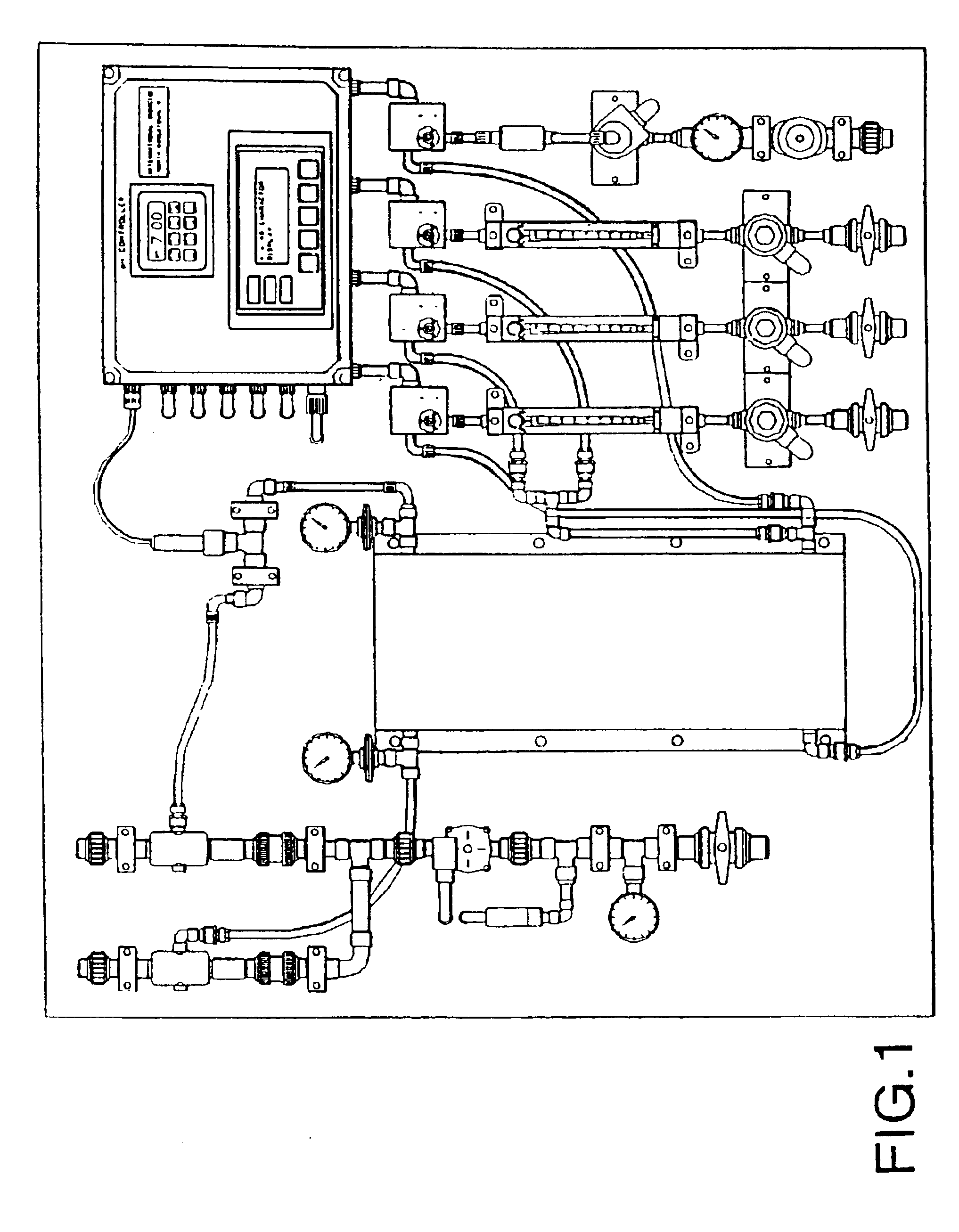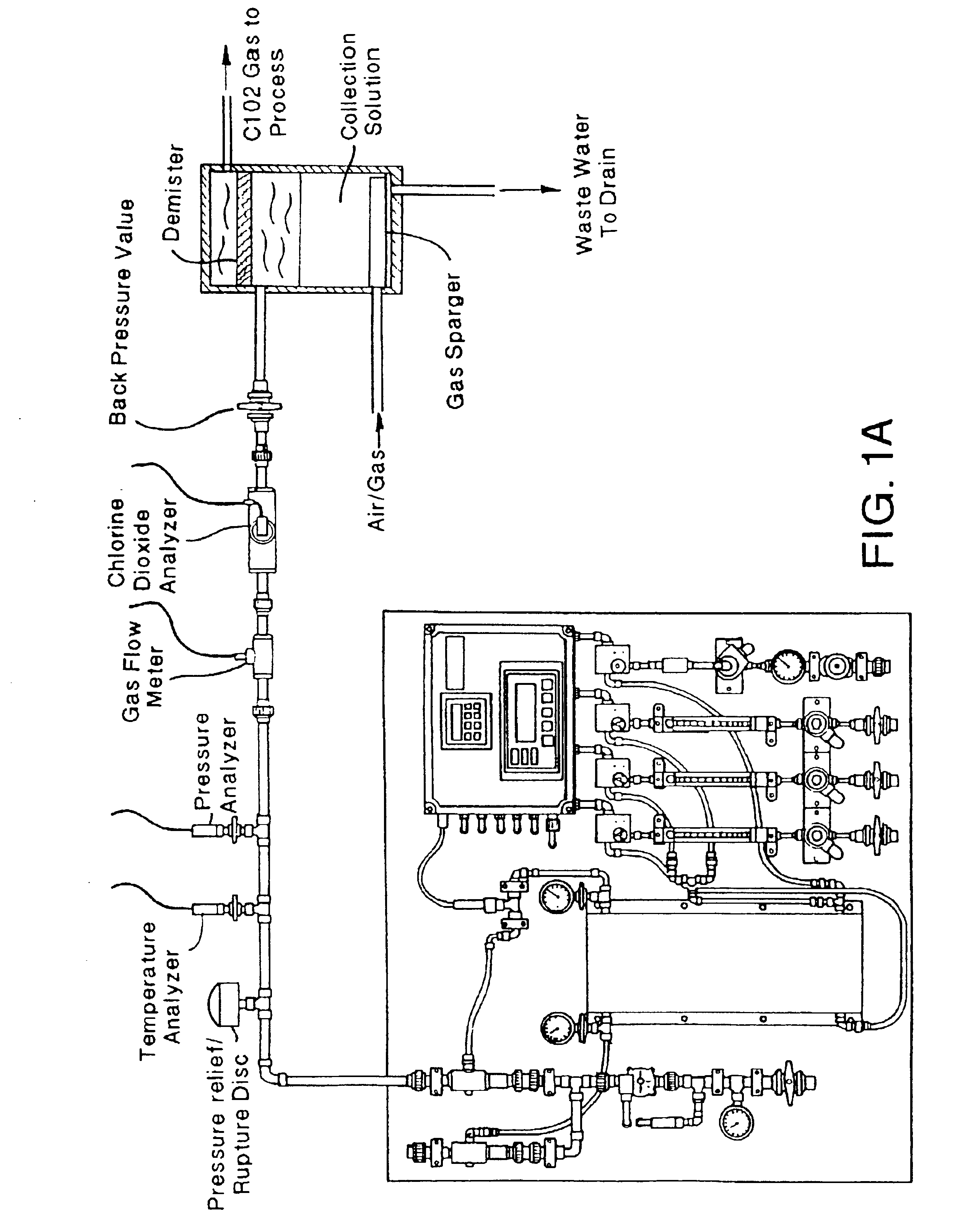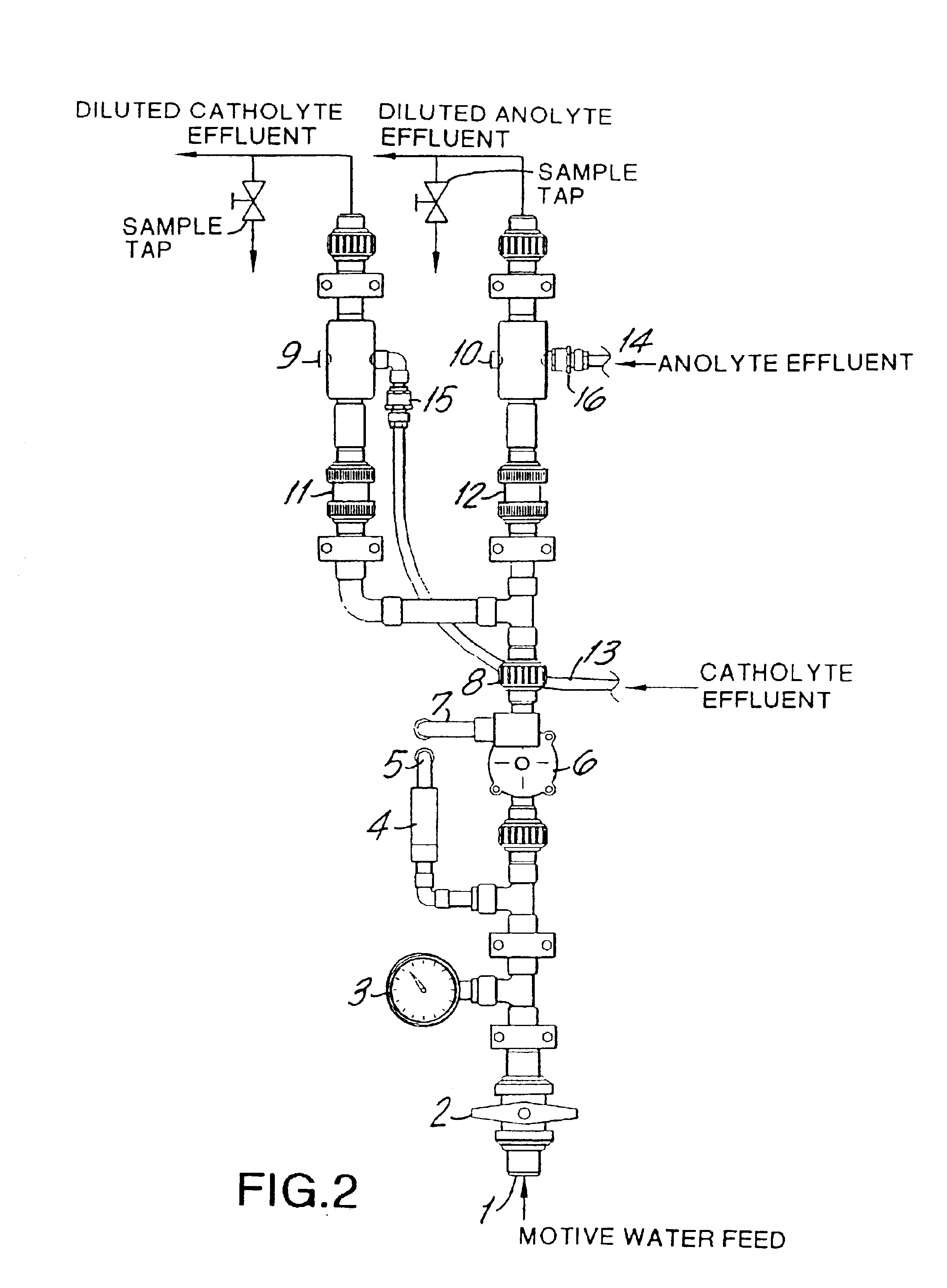Generator for generating chlorine dioxide under vacuum eduction in a single pass
- Summary
- Abstract
- Description
- Claims
- Application Information
AI Technical Summary
Benefits of technology
Problems solved by technology
Method used
Image
Examples
example 1
[0075]An Oxychlor e−™ (Trademark of International Dioxide, Inc.) chlorine dioxide generator was tested by feeding a diluted solution of sodium chlorite (2%) buffered at about pH 9 with a sodium carbonate / bicarbonate to the anolyte compartment. While the anolyte solution was educted through the anode compartment of the electrolytic cell softened water was pumped through the cathode compartment of the electrolytic cell. This is also the case for subsequent examples 2, 3, and 4 below. The cell described in the preceding figures has support ribbings for the membrane.
[0076]The results are shown below in Table 1.
[0077]
TABLE 1AnolyteCatholyteConversionPowerVacuumPressureClO2VoltsAmpsgpd(psig)gpd(psig)pHTitrations(%)4.31806510.38533.0A = 9572B = 6254.35836510.38534.5A = 8953B = 7614.2981657.48533.0A = 7672B = 498
[0078]The added membrane support ribbing on the anode side of the electrolytic cell significantly improved the conversion, as shown by the comparative data shown in Tables 2, 3, 4, ...
example 2
Using the electrolytic generator of Example 1 with support ribbing for the cell's membrane, additional runs were carried out where the pH of the anolyte effluent varied. The results are shown in Table 3 below.
[0081]
TABLE 3AnolyteCatholyteConversionPowerVacuumPressureClO2VoltsAmpsgpd(psig)gpd(psig)pHTitrations(%)5.6812065a6.410633A = 13769.1B = 9305.597.565a6.410633.75A = 5266.7B = 3656.2497.565a6.410634.5A = 3851B = 333a90% of design capacity
[0082]At the 90% of design capacity level the conversion decreased as the pH of the chlorine dioxide level increased.
example 3
[0083]Using the electrolytic generator of Example 1 with the supported ribbing for the cell's membrane, an additional run was carried out at 30% of design capacity. The results are shown in Table 4 below.
[0084]
TABLE 4AnolyteCatholyteConversionPowerVacuumPressureClO2VoltsAmpsgpd(psig)gpd(psig)pHTitrations(%)4.735022a7.18533A = 3457B = 272a30% of design capacity
[0085]The results show that at pH 3 and 30% of design capacity the conversion was only 57%, whereas at pH 3 and 90% of design capacity the conversion was 69.1% (see Table 3).
PUM
 Login to View More
Login to View More Abstract
Description
Claims
Application Information
 Login to View More
Login to View More - R&D
- Intellectual Property
- Life Sciences
- Materials
- Tech Scout
- Unparalleled Data Quality
- Higher Quality Content
- 60% Fewer Hallucinations
Browse by: Latest US Patents, China's latest patents, Technical Efficacy Thesaurus, Application Domain, Technology Topic, Popular Technical Reports.
© 2025 PatSnap. All rights reserved.Legal|Privacy policy|Modern Slavery Act Transparency Statement|Sitemap|About US| Contact US: help@patsnap.com



